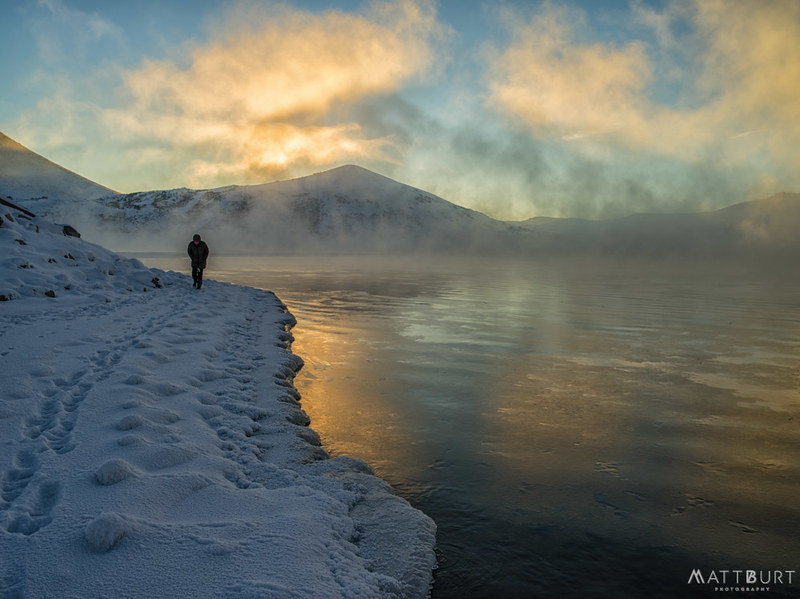You seem to be getting pretty good advice regarding ways and means of keeping your camera equipment warm and functioning. I live in Winnipeg which has been regarded as one of the coldest large (over 600,000) cities on the planet. It was -31, -32 a couple of nights ago and not much warmer during the day. Fortunately it's getting into a milder temp...don't know for how long. The local slang for Winnipeg is Winterpeg.

But what I have found that keeps me warm and wear when I'm out and about during extreme cold days, include Below Zero socks (used to get them at Marks), long underwear, heavy T-shirts, heavy polar fleece sweat shirts that zip high up to protect my neck from cold, a sheepskin trappers/Mountie style hat , usually a scarf that I fasten over my mouth/nose, heavy jeans and a farmer style, insulated bib coverall that goes well up my back/front upper torso and some old Sorel winter boots that are well insulated, think they were rated for 60 below, and a heavy canvas insulated, Arctic Carhartt jacket with optional hood. All this stuff layers well, so I can adjust how warm I need to be.
With these clothes, I kind of 'trap' the warm air in.
I used this outfit for ice fishing in Manitoba and North West Ontario. They used to film the TV show Ice Road Truckers in Manitoba/NW Ontario and Ford has a cold weather laboratory for testing their cars/trucks here, so I figure if it worked here, it will work anywhere...cold wise.
Being warm in extreme cold is of paramount importance.
I also wear locally made Raber winter Garbage Mitts...which are really good.
Cabelas Canada sells them, unfortunately I get get the link to work.


 Similar Threads
Similar Threads 




 ). That same year, a friend and I visited Uppsala in Sweden, in the middle of winter. While we were there, we joined a hike in a forest somewhere in the general vicinity (I forget where) to learn about animal tracks, how to identify them, and how to track the animals. I took my S200EXR on that trip with me, and used it for a solid four hours (maybe a little longer) during that hike. I don't know if the temperatures were quite as low as you mention, but I remember the hairs in my nostrils freezing whenever I breathed in. Everything around us was frozen solid. I've personally never been anywhere colder.
). That same year, a friend and I visited Uppsala in Sweden, in the middle of winter. While we were there, we joined a hike in a forest somewhere in the general vicinity (I forget where) to learn about animal tracks, how to identify them, and how to track the animals. I took my S200EXR on that trip with me, and used it for a solid four hours (maybe a little longer) during that hike. I don't know if the temperatures were quite as low as you mention, but I remember the hairs in my nostrils freezing whenever I breathed in. Everything around us was frozen solid. I've personally never been anywhere colder.

















